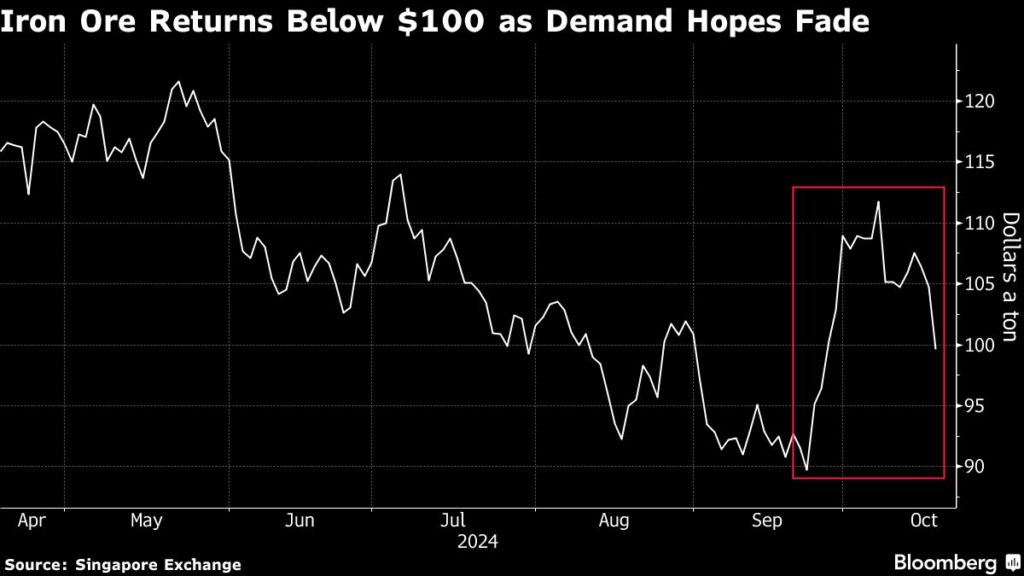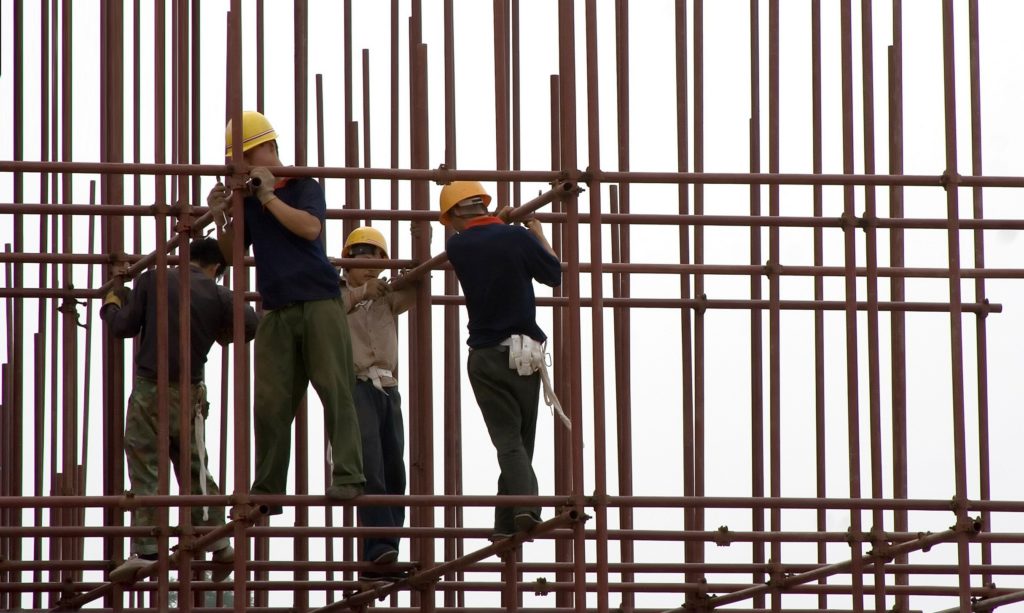China will expand a program to support the completion of unfinished housing projects to 4 trillion yuan ($562 billion), Housing Minister Ni Hong said at a briefing on Thursday. That nearly doubles the scale of spending as Beijing bids to ease the real estate crisis, but investors had been hoping for more.

“The property policies are focused on resolving the backlog of housing inventory, which doesn’t really help much with steel demand in the short term,” said Zhou Minbo, an analyst with GF Futures Co.
Iron ore had rallied from a two-year low below $90 in late-September to above $110. But prices have faded as a series of government briefings on economic policy fell short of expectations. China’s economy is still under pressure, with its third-quarter growth likely to be at its weakest pace in six quarters, according to a Bloomberg survey.
Investors are placing too much expectation on government announcements of stimulus, said Han Jing, an analyst with SDIC Essence Futures Co. There has been a clear shift in policies, but the scale and the pace will become clear more gradually, he said.
Iron ore is down by more than a quarter this year, and pressure isn’t coming just from weaker Chinese demand. Relatively strong supply has been underscored by quarterly output tallies from the big three miners this week, with Brazil’s Vale SA pushing its production to the highest since 2018.
Iron ore futures were trading down 4% at $100.60 a ton as of 12:36 p.m. London time. Copper was 0.5% lower at $9,514 a ton on the LME, having earlier hit a three-week low of $9,435.50 a ton. Tin fell 2.4%, while nickel and zinc were more than 1% lower.
Read More: World’s top two iron ore miners raise output even as China slows

